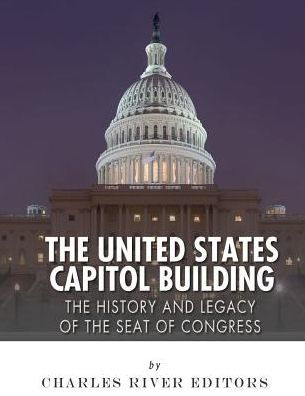Home
The United States Capitol Building: The History and Legacy of the Seat of Congress



The United States Capitol Building: The History and Legacy of the Seat of Congress
Current price: $11.14
Loading Inventory...
Size: OS
*Includes pictures *Includes accounts of the Capitol's construction and history written in the 19th century *Includes a bibliography for further reading *Includes a table of contents "The cornerstone was laid by Washington in 1793; the terrace was finished nearly a hundred years later, in 1891; and yet the Capitol will never be complete while the nation lasts. The impress of each succeeding generation will be found upon its walls, marking the intellectual, artistic and governmental advancement of the age. The great pile is national, American, human. On its walls is written the nation's history. Its corridors resound to the footsteps of her living heroes and sages; its every stone echoes the departed voices of her greatest dead." - George Hazelton For over two centuries, the capital of America has been located in Washington, D.C., and among all the iconic landmarks and monuments associated with the city, nothing is as conspicuous as the Capitol, the magnificent building that houses Congress and sits on Capitol Hill at the epicenter of the city. At the same time, even though the Capitol is now one of the most recognizable buildings in the world, the image everyone is familiar with took decades to achieve, and its grand scope belies its rather chaotic history. In fact, the Capitol was partially burned by the British during the War of 1812, and its now famous dome was still under construction while the nation fought itself during the Civil War. Moreover, it's easy to forget that the expansion of the country resulted in the addition of new Congressmen, requiring the expansion of the Capitol as the seat of the legislative branch. The Capitol truly remained a work in progress until the end of the 19th century, and until recently, it was possible to drive cars nearly to the steps leading up to the building. That changed in the wake of the attacks of September 11, 2001, and since then, much has been done to secure the grounds, including extending the property line outward, placing permanent barriers around the building, and adding a visitor center through which tourists can be routed. Even in this new era, however, it is easy for visitors in the Capitol to sense the history around every corner; as Kansas Congressman Kevin Yoder once put it, "Certainly in the Capitol you do get moments were you sort of take a deep breath and think of all the historic figures who have been in that building, like Abraham Lincoln, who have stood right in those same rooms to make the landmark decisions." The history of the Capitol also serves as a reminder that the building, like the nation, both shapes and is shaped by history. There are still singed walls from the War of 1812 under the marble façade, and microscopic examination could no doubt find cracks from the vibration of distant cannon fire during the Civil War. Of course, there is no way to calculate the wear and tear caused by the millions of feet that trudge through the Capitol's sacred halls each year, but through it all, the Capitol has managed to endure, just like the nation it represents. The United States Capitol Building: The History and Legacy of the Seat of Congress looks at the winding history of the building and how it has changed over time. Along with pictures of important people, places, and events, you will learn about the Capitol like never before, in no time at all.


















